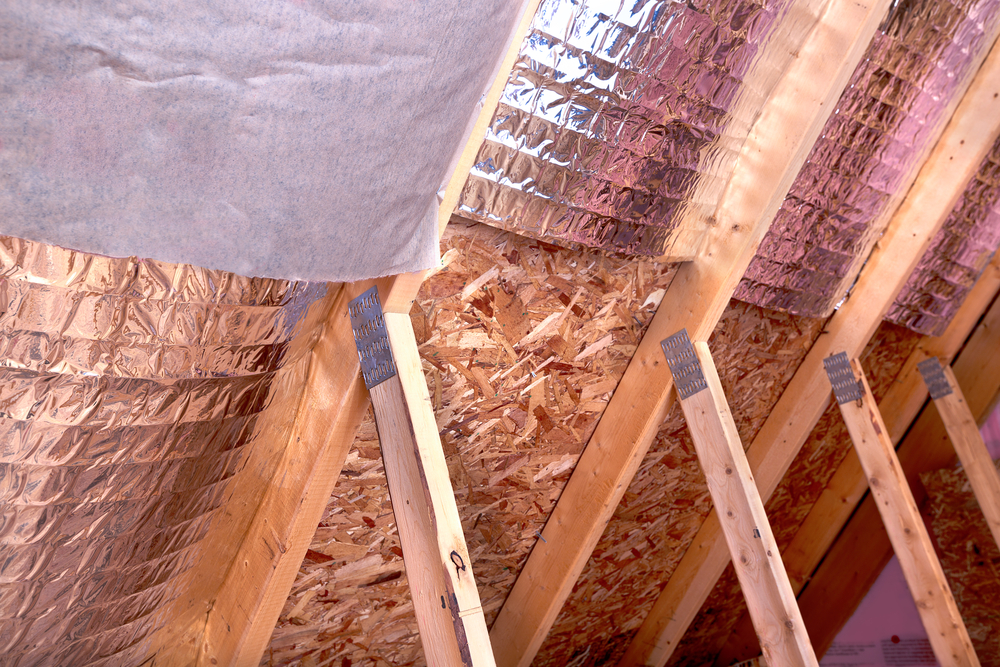What Is A Radiant Barrier, And What Does It Do?

If your home is too hot, you may consider installing radiant barriers. Radiant barriers can reflect radiant heat away from your home, leaving your air conditioning system more effective and your house cooler in the summer.
You might be curious about how exactly radiant barriers work before getting a bunch of them installed in your house. Do they really work as well as advertised? How do they reflect heat away from your home? The answer to this question lies in science and thermodynamics. Ultimately, radiant barriers are a great way to cool down your home and save on energy bills.
What is a radiant barrier?
Radiant barriers are sheets of aluminum foil placed over another surface like kraft paper, plastic, or cardboard. They come in a wide range of materials, and studies have shown that they can reduce cooling costs by 5-10% if installed in sunny climates.
They come in two varieties – breathable and non-breathable. Breathable radiant barriers are perforated with tiny holes, allowing moisture to go through. These are best installed over open air, so the moisture doesn’t become a problem.
Non-breathable radiant barriers, on the other hand, are solid. These are also called vapor barriers, as they’re fantastic at trapping moisture. They’re best installed over closed wall cavities with no air movement.
How does it reflect heat?
Radiant barriers work because they entirely block most UV heat that hits them. Usually, when heat hits a surface, it’s absorbed rather than reflected. But radiant barriers are designed to absorb as little as possible. Instead, the heat is reflected off the foil surface and bounced back into the air.
At least 90% of the UV heat that touches radiant barriers is outright bounced back into the air, leaving only 10% of the heat leaking into your home. This makes homes with radiant barriers significantly cooler than homes without them.
How does it help insulation?
So if you already have insulation, why get a radiant barrier? Isn’t the insulation supposed to be protecting your home from heat?
If heat isn’t reflected, it’ll eventually radiate off of your home’s insulation. Your insulation can only absorb so much heat. This means, on unusually hot days, the insulation will fail to protect you.
Insulation can also succumb to humidity, while radiant barriers aren’t affected by it. Radiant barriers are designed to deal with moisture well when it’s hard to do the same for insulation. It’s an excellent facing material for your insulation, protecting it from the worst.
Radiant barrier installation
The installation of radiant barriers is very particular and should only be done by a professional service. It’s not necessarily dangerous to install radiant barriers yourself (although there are safety concerns with any installation). No, you should never install radiant barriers because improper installation leads to a less effective barrier.
Radiant barriers must face an air space and accumulate as little dust as possible. Dust reduces the reflectiveness of these barriers. They should be installed perpendicular to energy sources to ensure the energy reflects. Overall, there’s a lot to keep in mind.
